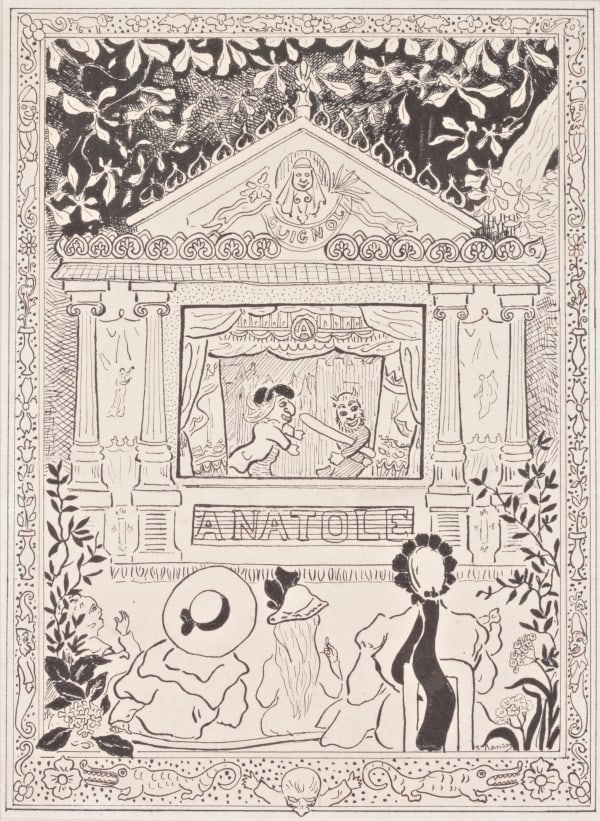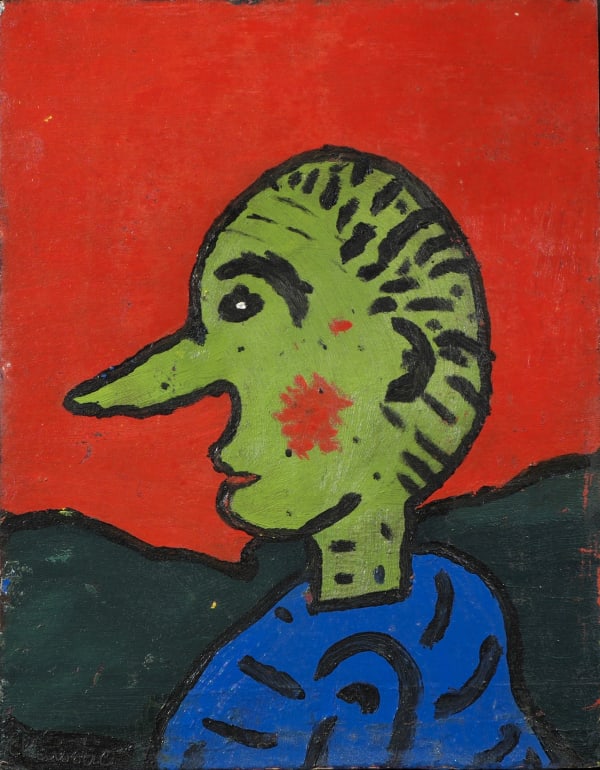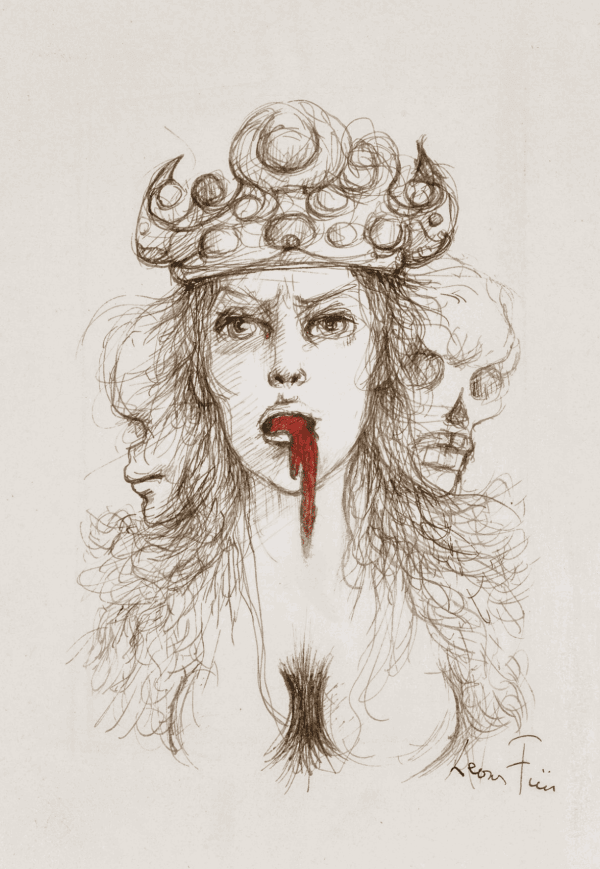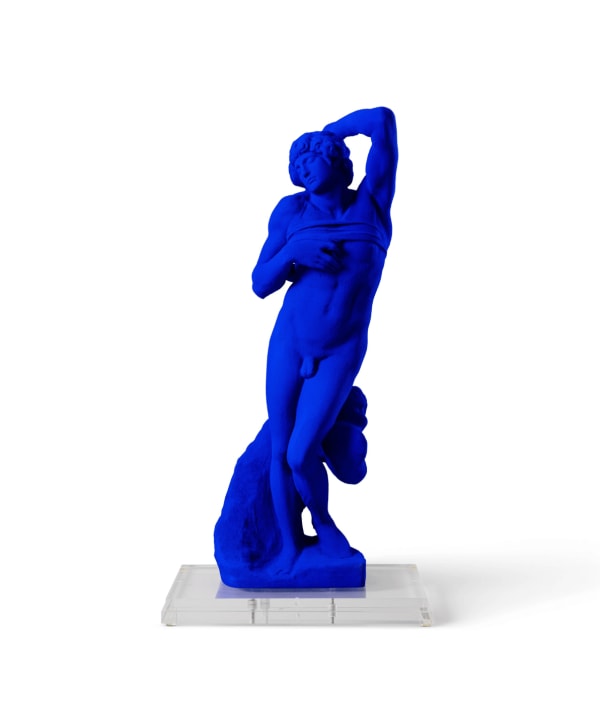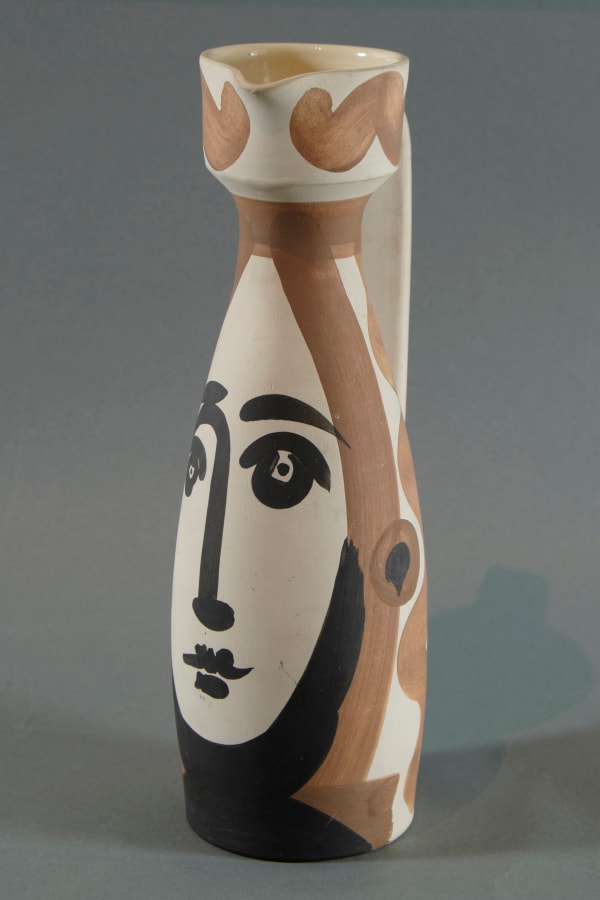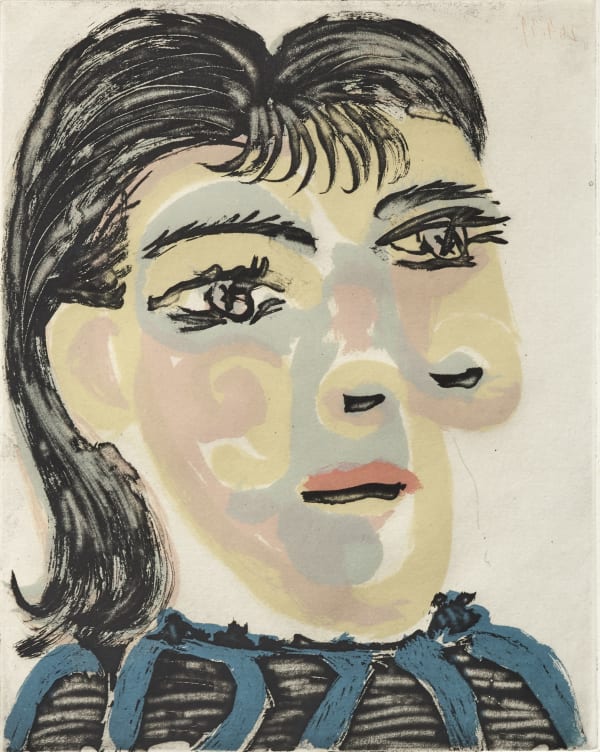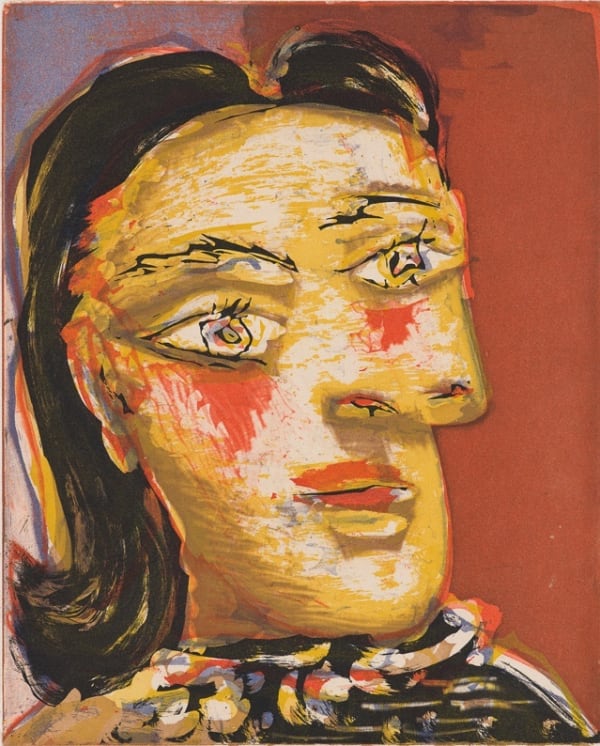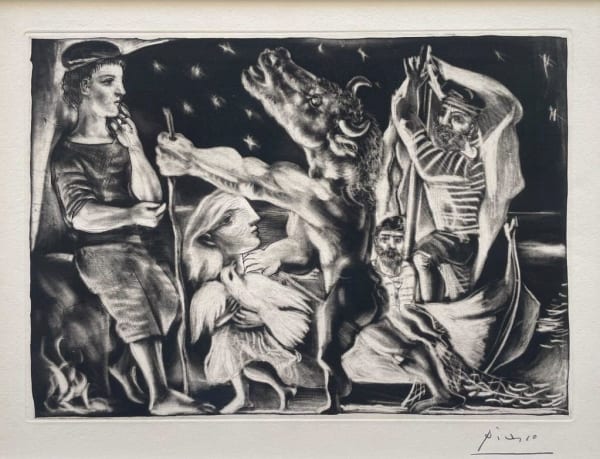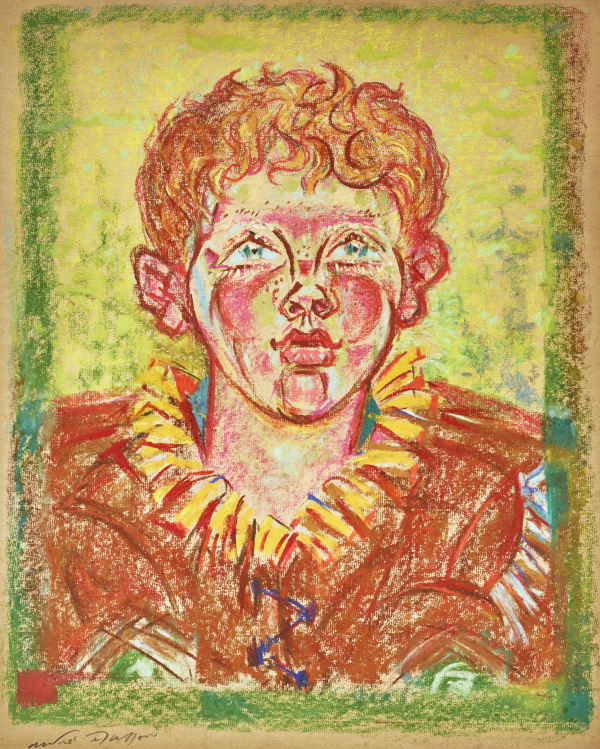La Figuration dans tous ses états : la figuration moderne au XXe siècle
Current exhibition
Vue d'ensemble
The exhibition Figuration in All Its Forms offers a panoramic view of figurative movements in modern art, from Impressionism, Post-Impressionism and the Pont-Aven School up to the post-war period.
While abstraction represents the great paradigm shift of the 20th century, other artists rejected the academic and bourgeois tradition through figuration. While Cubism is considered one of the foundations of abstraction, Cubist artists such as Pablo Picasso, Georges Braque and Fernand Léger never considered themselves abstract. The path of colour taken by the great representatives of the Fauve movement places the human figure at centre stage, as the works of Kees Van Dongen prove. Expressionist artists in turn distort reality in a poetic way, a manifesto against academic beauty. Artists such as Chaim Soutine and Gen Paul would go on to inspire American abstract expressionism decades later. The surrealists, in turn, brought figuration into the realm of dreams and the imagination.
For centuries, pictorial and sculptural representations have fascinated humanity. Nevertheless, at the beginning of the 20th century, with the arrival of abstraction and the liberation of painting from all constraints of figuration, figurative painting became a difficult term. Modern art and abstract art became synonymous at that time. Has figuration become a vestige, a survivor from another world? Its persistence within avant-garde movements shows that abstraction is not the only path taken by artists to renew the language of the visual arts. Figuration in all its forms follows on from and is a continuation of the exhibition Abstraction in all its forms held by the gallery in 2018, a way of showing the public the other path of modern visual art.
In the post-war period, the human figure once again became a central preoccupation of artists, in an existential need to question our place in the world. Post-war figuration positioned itself as a countermovement to the geometric or lyrical abstraction that dominated and had become a stylistic imperative. The works of artists such as Eugène Leroy and Fautrier are on the borderline between figuration and abstraction, a manifesto of the place of man himself at that time. The art brut of Gaston Chaissac or Jean Dubuffet provides an alternative to the European cultural tradition. The Nouveaux réalistes such as Yves Klein, Niki de Saint-Phalle or César represent a response to American Pop Art from across the Atlantic. These artists thus lay the foundations for figurative art in the 20th century.
La Galerie Jean-François Cazeau, installée à Paris dans le Marais depuis 2009, dresse des ponts entre les Maîtres Modernes et l’art de l’après-guerre des deux côtés de l’Atlantique, tout en s’ouvrant à l’art contemporain. Depuis 2009, elle organise des expositions thématiques autour des grands mouvements historiques du XIXe et XXe, comme l’exposition monopgraphique Riopelle (2010), la première rétrospective Afro en France (2013), Jean Miro: la simplicité poétique (2014), Picasso: Mon ami, Tabaraud (2014), L’Art abstrait géométrique (2017), L’Abstraction dans tous ses états (2018), Giacometti Intime (2018), Pablo Picasso: MasterPrints (2023) et la rétrospective André Masson en 2024, à l’occasion du Centenaire du surréalisme.
L’exposition La Figuration dans tous ses états offre une vue panoramique des mouvements figuratifs de la modernité, à partir de l’impressionnisme, post-impressionnisme et l’École de Pont-Aven jusqu’à l’après-guerre.
Oeuvres
-
 Paul-Elie Ranson (1864-1909)Guignol Anatole, 1896-97India ink on paper.24 × 18 cmSigned by the artist on the lower-right and monogrammed on the lower left.
Paul-Elie Ranson (1864-1909)Guignol Anatole, 1896-97India ink on paper.24 × 18 cmSigned by the artist on the lower-right and monogrammed on the lower left. -
 Ker-Xavier Roussel (1867–1944)Moïse sauvé des eaux, 1925Pastel on paper26.5 × 27 cm
Ker-Xavier Roussel (1867–1944)Moïse sauvé des eaux, 1925Pastel on paper26.5 × 27 cm -
 Georges Lacombe (1868-1916)Barrière le long de la Briante, 1910-13Oil on canvas73 x 60 cmMonogrammed on the lower right
Georges Lacombe (1868-1916)Barrière le long de la Briante, 1910-13Oil on canvas73 x 60 cmMonogrammed on the lower right -
 Jean-Charles Blais (1956-)Très Vite!, 1985Gouache and aluminium paper on paper.106 × 112.5 cmSigned on the lower left; titled on the center, and dated on the lower right.
Jean-Charles Blais (1956-)Très Vite!, 1985Gouache and aluminium paper on paper.106 × 112.5 cmSigned on the lower left; titled on the center, and dated on the lower right. -
 Gaston ChaissacAutoportrait, 1938Huile sur panneauDimensions
Gaston ChaissacAutoportrait, 1938Huile sur panneauDimensions
27 x 21 cm
53 x 48 cm, (avec cadre)Signée chaissac en bas à gauche -
 Kees Van DongenVan Dongen fait son marché, 1949Gouache and pencil on paper.23 x 16Signed by the artist in the lower-right corner.
Kees Van DongenVan Dongen fait son marché, 1949Gouache and pencil on paper.23 x 16Signed by the artist in the lower-right corner. -
 Leonor FiniRéflexion dans la fenêtre d'un trainEncre et lavis sur papier27 x 22 cmSignée en bas à droite
Leonor FiniRéflexion dans la fenêtre d'un trainEncre et lavis sur papier27 x 22 cmSignée en bas à droite -
 Leonor FiniSolomonie, ca. 1970Gouache et encre sur papier24 x 22 cmSignée en bas à droite
Leonor FiniSolomonie, ca. 1970Gouache et encre sur papier24 x 22 cmSignée en bas à droite -
 Armand GuillauminLe pont d’Austerlitz, Quai de Seine, Paris, 1873Huile sur toile60 x 73 cm
Armand GuillauminLe pont d’Austerlitz, Quai de Seine, Paris, 1873Huile sur toile60 x 73 cm
81 x 94 avec cadreSigné en bas à gauche. Daté «2 73» en bas à droite. -
 Vladimir Baranoff-RossinéLa Carrière, 1912Huile sur toile50 x 74 cmSigned on the lower-left corner
Vladimir Baranoff-RossinéLa Carrière, 1912Huile sur toile50 x 74 cmSigned on the lower-left corner -
 Yves KleinL'Esclave mourant d'après Michel-Ange, 1962IKB Pigment and synthetic resin on plaster59 × 18 × 13 cmEdition of 300, Numbered 127/300Numbered 127/300 on the label posed on the underside, and signed R. Klein-Moquay
Yves KleinL'Esclave mourant d'après Michel-Ange, 1962IKB Pigment and synthetic resin on plaster59 × 18 × 13 cmEdition of 300, Numbered 127/300Numbered 127/300 on the label posed on the underside, and signed R. Klein-Moquay -
 Pablo PicassoVisage au nez noir, 1969Turned ceramic pitcher33.7 x 23 cmEdition of 200 plus 3 editor's proofs.With the stamps «Edition Picasso Exemplaire Editeur Madoura»; «Madoura Plein Feu» and «Edition Picasso» on the underside.
Pablo PicassoVisage au nez noir, 1969Turned ceramic pitcher33.7 x 23 cmEdition of 200 plus 3 editor's proofs.With the stamps «Edition Picasso Exemplaire Editeur Madoura»; «Madoura Plein Feu» and «Edition Picasso» on the underside. -
 Pablo PicassoVisage, 1955Turned ceramic pitcher (white faïence, painted engobe glazes )31.5 × 10.5 × 10.5 cmEdition of 500Stamped "Edition Picasso/Madoura Plein Feu" on the base.
Pablo PicassoVisage, 1955Turned ceramic pitcher (white faïence, painted engobe glazes )31.5 × 10.5 × 10.5 cmEdition of 500Stamped "Edition Picasso/Madoura Plein Feu" on the base. -
 Pablo PicassoYan Bandeau noir, 1963Turned ceramic pitcher (red faïence, black engobe engraved decor)28 × 13 cmEdition of 300 by Madoura, Vallauris.Incised Edition Picasso and Madoura, with the Edition Picasso and Madoura stamps. Numbered 233/300.
Pablo PicassoYan Bandeau noir, 1963Turned ceramic pitcher (red faïence, black engobe engraved decor)28 × 13 cmEdition of 300 by Madoura, Vallauris.Incised Edition Picasso and Madoura, with the Edition Picasso and Madoura stamps. Numbered 233/300. -
 Pablo PicassoTête de femme n° 2 (Portrait of Dora Maar), 1939Aquatinte, grattoir et pointe sèche en quatre couleursDimensions de la planche : 29,9 x 23,7 cm
Pablo PicassoTête de femme n° 2 (Portrait of Dora Maar), 1939Aquatinte, grattoir et pointe sèche en quatre couleursDimensions de la planche : 29,9 x 23,7 cm
Encadré : 66 x 55 cmAquatinte, grattoir et pointe sèche en quatre couleurs sur quatre plaques de cuivre. 104 impressions sur papier Montval. Ces épreuves ne sont ni numérotés ni signés.Daté en haut à droite: 20/4/39 -
 Pablo PicassoTête de femme n° 4 (Portrait of Dora Maar), 1939Aquatinte, grattoir et pointe sèche sur papier Montval avec filigrane VollardImage : 29,9 x 23,7 cm
Pablo PicassoTête de femme n° 4 (Portrait of Dora Maar), 1939Aquatinte, grattoir et pointe sèche sur papier Montval avec filigrane VollardImage : 29,9 x 23,7 cm
Feuille : 45 x 34 cm
Encadrée : 65,5 x 56 cmNumérotée au crayon "50/80". Imprimée par Lacourière. -
 Pablo PicassoMinotaure aveugle guidé par Marie-Thérèse au pigeon dans une nuit étoilée, 1934Aquatint treated with a scraper as a manière noire, drypoint and burin on copper, on Montval paper24.7 x 34.8 cm (image)
Pablo PicassoMinotaure aveugle guidé par Marie-Thérèse au pigeon dans une nuit étoilée, 1934Aquatint treated with a scraper as a manière noire, drypoint and burin on copper, on Montval paper24.7 x 34.8 cm (image)
34 x 44.4 cm (sheet)260Signed by the artist on the lower-right -
 Pablo PicassoMinotaure aveugle guidé dans la nuit par une petite fille au pigeon , 1934Eau-forte et pointe-sèche sur papier Montval filigranne "Picasso"Image: 24 x 30 cm
Pablo PicassoMinotaure aveugle guidé dans la nuit par une petite fille au pigeon , 1934Eau-forte et pointe-sèche sur papier Montval filigranne "Picasso"Image: 24 x 30 cm
Papier: 34 x 43.7 cmEditée à 260 exemplaires par Ambroise Vollard, Paris.
Imprimée par Roger Lacourière, Paris.Signée par l'artiste en bas à droite. -
 Pablo PicassoLa Puce, 1936 - 1942Eau-forte et aquatinte sur papier de Chine37 x 27 cm (14 ½ x 10 5/8 in.)Epreuve d'Artiste, du 2e état sur papier de Chine, en plus de l'édition numérotée de 35 gravures originales pour illustrer les textes de Buffon, Paris, 1942.
Pablo PicassoLa Puce, 1936 - 1942Eau-forte et aquatinte sur papier de Chine37 x 27 cm (14 ½ x 10 5/8 in.)Epreuve d'Artiste, du 2e état sur papier de Chine, en plus de l'édition numérotée de 35 gravures originales pour illustrer les textes de Buffon, Paris, 1942.
Martin Fabiani, éditeur. imprimée par Lacourière -
 Pablo PicassoFemme chouette , 1951Turned ceramic vase30 x 22.5 cmEdition de 500With the stamps «Edition Picasso Madoura»; «Madoura Plein Feu» and «Edition Picasso».
Pablo PicassoFemme chouette , 1951Turned ceramic vase30 x 22.5 cmEdition de 500With the stamps «Edition Picasso Madoura»; «Madoura Plein Feu» and «Edition Picasso». -
 Pablo PicassoCavalier et cheval, 1952Turned ceramic pitcher (earthenware, partially glazed and painted).H: 23.5 cmEdition of 300, 33/300Stamped « Edition Picasso » and « Madoura plein feu » on the base.
Pablo PicassoCavalier et cheval, 1952Turned ceramic pitcher (earthenware, partially glazed and painted).H: 23.5 cmEdition of 300, 33/300Stamped « Edition Picasso » and « Madoura plein feu » on the base. -
 Gen PaulPortrait d'Ernest Lajeunesse, 1928Huile sur toile100 x 65 cm (39 ½ x 25 ½ in.)Signée en bas à droite
Gen PaulPortrait d'Ernest Lajeunesse, 1928Huile sur toile100 x 65 cm (39 ½ x 25 ½ in.)Signée en bas à droite -
 André MassonVille crânienne, 1940Aquarelle sur papier marouflé sur toile48 x 62 cm (18 7/8 x 24 ½ in.)Signé et daté en bas à gauche: André Masson 1940
André MassonVille crânienne, 1940Aquarelle sur papier marouflé sur toile48 x 62 cm (18 7/8 x 24 ½ in.)Signé et daté en bas à gauche: André Masson 1940 -
 André MassonPoursuite, 1933Huile sur toile81 x 116 cm (32 x 45 ¾ in.)Signé en bas à gauche
André MassonPoursuite, 1933Huile sur toile81 x 116 cm (32 x 45 ¾ in.)Signé en bas à gauche -
 André MassonPortrait de Peter Matisse, 1943Pastel sur papier49 x 39 cm
André MassonPortrait de Peter Matisse, 1943Pastel sur papier49 x 39 cm
Cadre: 65 x 55 cmSigné en bas à gauche -
 André MassonDans le pur néant. À la cîme de l'Être, 1939India ink on paper63 × 48 cmSigned on the lower right and titled on the reverse
André MassonDans le pur néant. À la cîme de l'Être, 1939India ink on paper63 × 48 cmSigned on the lower right and titled on the reverse
Vue d'installation
Virtual Exhibition

